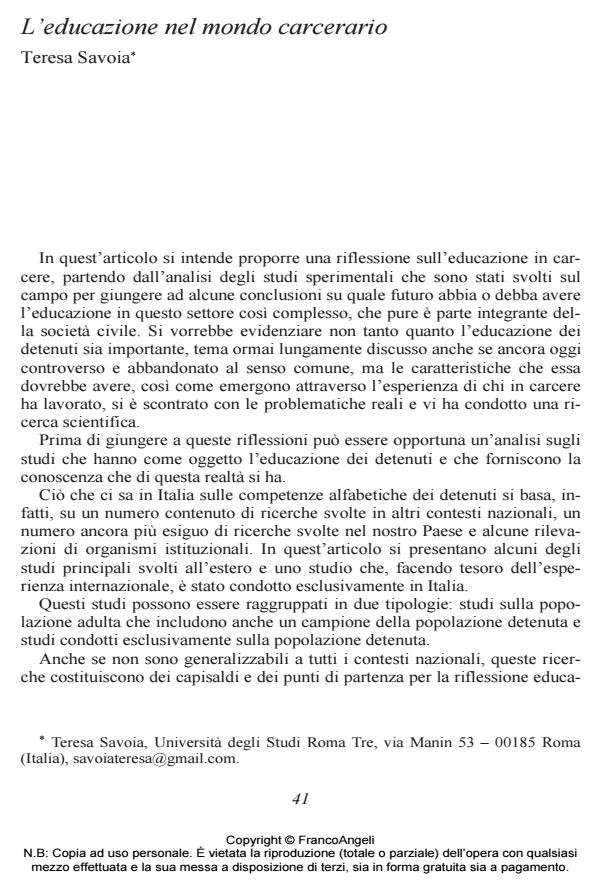Education in the prison world
Journal title CADMO
Author/s Teresa Savoia
Publishing Year 2015 Issue 2015/1
Language Italian Pages 18 P. 41-58 File size 233 KB
DOI 10.3280/CAD2015-001005
DOI is like a bar code for intellectual property: to have more infomation
click here
Below, you can see the article first page
If you want to buy this article in PDF format, you can do it, following the instructions to buy download credits

FrancoAngeli is member of Publishers International Linking Association, Inc (PILA), a not-for-profit association which run the CrossRef service enabling links to and from online scholarly content.
The present article introduces a reflection about inmates and Literacy. This reflection raises through an overview on the available studies about Literacy in the prison world. Research on this subject has been developed in two ways: either on the entire population and the prison population or exclusively on the prison population. Both types of studies are valuable, since they allow a higher and closer knowledge of the educational profiles of this area of society which is generally unknown and hard to inspect. At the same time, they offer a wide basis of analysis between inmates’ level of alphabetization as compared to the population in general and help make choices for future development. In Italy, research on inmates is very scanty. However, the international studies presented below lay the basis for a research that was led in an Italian prison in 2010, and which analysed the education, literacy and cultural habits of inmates.
Keywords: Inmates, literacy, cultural habits, prison education, recidivism
Teresa Savoia, L’educazione nel mondo carcerario in "CADMO" 1/2015, pp 41-58, DOI: 10.3280/CAD2015-001005